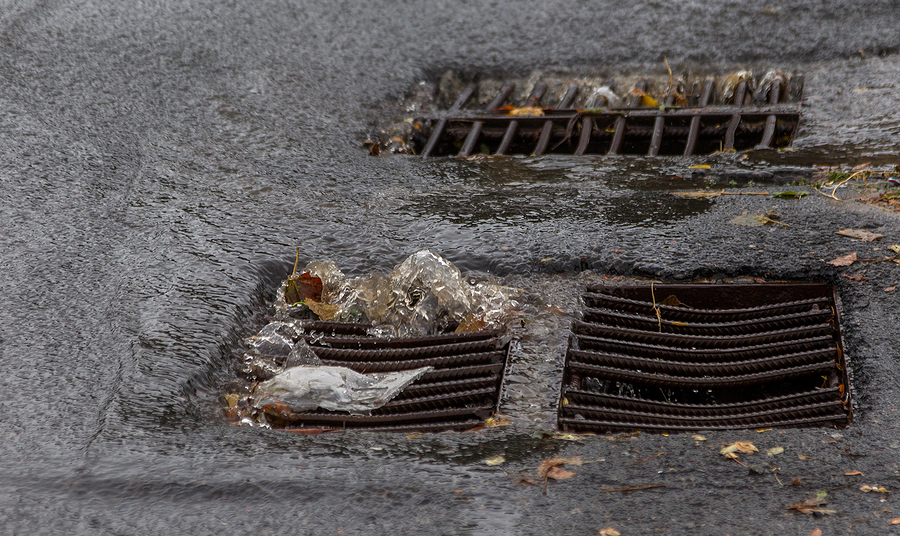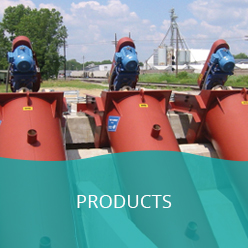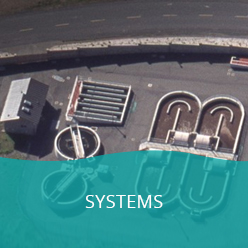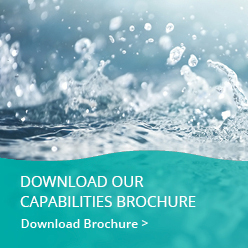Stormwater management is important when looking at wastewater management as a whole. Stormwater runoff is when excess water from snow melting or precipitation flows over land surfaces and piles up, instead of soaking into the ground. Urban runoff is when this same snowmelt or precipitation runs off and piles onto streets and roads. Ultimately, there is an increase in urban runoff due to urbanization and climate change. This pushes the need for preparing stormwater management systems to keep up with this.
What Causes Urban Stormwater Runoff?
Urban stormwater runoff is caused by an excess of rainfall or snowmelt that accumulates over areas that prevent it from soaking into the ground. It can typically be found on streets, roads, or filled on top of the ground. As a result of this, the runoff can accumulate bacteria and other pollutants in the water. Urban areas typically have a high concentration of impervious surfaces that hold onto the water. This leads to increased volume of runoff, and if there’s an excess of precipitation or snowmelt, this water can continue to accumulate and hold onto pollution.
What Are the Impacts of Poor Stormwater Management?
With poor stormwater management, various issues can arise. Here’s a look at some of the main problems that can come from poor stormwater runoff.
Flooding
Flooding is one of the most common impacts of poor stormwater management. This is because the runoff from previous storms continues to build up, and if multiple storms or extra rain are coming in, then this will make more stormwater runoff and overwhelm drainage systems. Ultimately, this will result in that runoff having nowhere to go and leading to flooding in businesses, homes, and on roads.
Water Pollution
Stormwater causes a lot of pollution in the water, including bacteria, natural sediment, nutrients, and toxic substances. There is a possibility that this water could lead to bodies of water and pollute drinking water sources or even negatively affect aquatic life.
Erosion or Destruction
With stormwater piling up and flowing through different areas, there is a potential for erosion and other damage to structures that the water comes into contact with. Infrastructure damage and erosion can cause a multitude of other issues for towns and communities that deal with stormwater runoff.
Public Health Impacts
This stormwater can carry bacteria through many different avenues, meaning that it could also end up in drinking water areas. This could potentially cause illnesses from drinking water or other health effects from swimming or sporting in contaminated bodies of water.
Economic Costs
Dealing with stormwater runoff and the negative effects that come with this can cause huge hits to the economy in certain areas that deal with this. Between the flooding of homes and businesses, the need for more wastewater management systems in place to combat pollution, and erosion problems, this can make for a huge economic hit on the affected areas.
What Are the Best Practices for Stormwater Management?
When it comes to stormwater management, there are ways that it can be helped with best practices. Here are a few of the best practices when it comes to stormwater management.
Changing Up Infrastructure
One of the best ways that you can help with stormwater management is to have infrastructure that helps manage the stormwater or that can help avoid the negative effects of stormwater runoff. Rain gardens or green roofs are great to implement for areas that deal with heavy storms and need some stormwater runoff. Permeable pavement can also help with this to avoid excess water piling up on pavement where it would otherwise be a potential for flooding.
Changes to Improve Water Quality
Implementing different precautions to help improve water quality in case of stormwater runoff is an important part of keeping communities safe. Silt fences and erosion control buffers can help with erosion and sediment control in the case of stormwater runoff. Control plans and wastewater treatment practices can help ensure that whatever stormwater runoff situations you do run into can be managed and treated within an optimal timeframe. Ensuring that your wastewater treatment systems are in best practice can help you avoid having any long-lasting negative effects on communities.
How Philadelphia is Setting a Great Example for Stormwater Effects
Philadelphia is one city that has been a great example of maintaining stormwater runoff effects and putting in practices that keep its community safe. Philadelphia has created Green City, Clean Waters, which is a 25-year initiative to reduce the amount of stormwater entering sewers by using green infrastructure and expanding stormwater capacity. The city has seen beneficial effects of this movement within their city, and with it starting in 2011, they are expected to hit their goals by 2036. They are a prime example of making changes and seeing the impact directly in their city of making it a greener and better place to live for their community.
The Future of Stormwater Runoff in Urban Areas
With the changes in the climate and other factors, we could see an increase in future stormwater runoff in urban areas. Ultimately, this can cause problems for many areas if they are not prepared or do not have the knowledge in place to deal with this excess runoff. There is an increasing need for partnerships and resilience within communities to be prepared for this, and also to put plans in place to combat it. Wastewater treatment is one particular way, but it’s also important to put in practices like those seen in Philadelphia to make a huge impact on communities that deal with urban stormwater runoff.
Final Thoughts on Stormwater Runoff and Urban Runoff
Urban stormwater runoff has been a huge problem for many different areas and communities as they’ve dealt with things like flooding, pollution, and erosion in their communities. These effects are damaging to many people and can make economic issues present themselves in the most intense ways. There is a need to put in place practices and preventatives that will help when these things happen. Climate change and an increase in storms or natural disasters can mean that these runoff situations can start happening more frequently. This is even more reason to get communities prepared and to keep the people of those communities safe. Start today by putting in place advanced wastewater treatment practices and setting up other guidelines that help with stormwater runoff in communities. Contact us to learn more.








